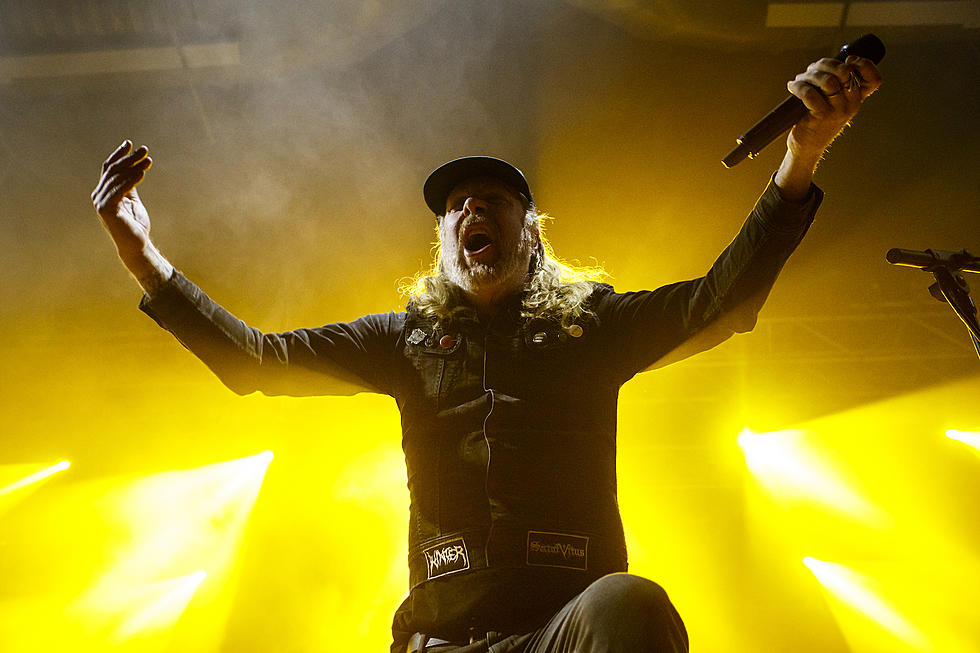AT THE GATES
The Flame That Fed the Swarm
There are few bands whose trajectory captures the volatile alchemy of early '90s metal as vividly as At the Gates. Emerging from the ruins of the obscure death/doom outfit Grotesque, the Swedish quintet channelled chaos and melancholy into a sound that would come to define an entire movement. From their raw, fractured beginnings to the surgical precision of Slaughter of the Soul, At the Gates carved a singular path, one built not on compromise, but on the uncompromising collision of beauty and violence.
Roots in Ruin
“Gardens of Grief” and “The Red in the Sky is Ours”
Formed in Gothenburg in 1990, At the Gates were part of a nascent Swedish Death Metal scene already pulsing with creativity. But unlike the chainsaw riffing and crust-punk fury of Stockholm’s Entombed and Dismember, At the Gates looked inward, into the abstract and the literary, crafting music that felt like a philosophical treatise set to dissonance. Their debut EP, “Gardens of Grief” (1991), released via Dolores Recordings, is a staggering document of potential—chaotic, disorienting, and full of jagged edges. Tomas Lindberg’s vocals, already acidic and raw, tore through Adrian Erlandsson’s restless drumming and the Björler brothers’ labyrinthine riff work. If Death Metal was a war, At the Gates fought with poetry and shrapnel.
That promise fully unravelled, or
rather, was reconstructed, on their first full-length, “The Red in the Sky Is
Ours” (1992). The album is an anomaly: unpredictable, unfriendly, and obsessed
with structure. Tracks like “Kingdom Gone” and “Within” eschew traditional
verse-chorus logic for sprawling, angular riffs that dissolve as quickly as
they build. The addition of violin, courtesy of session player Jesper Jarold,
only deepened the sense of dislocation. It was, in many ways, a spiritual
sibling to albums like The Key by Nocturnus or early works by Death, but it
stood apart in its emotional weight—a desperate, wounded record that refused
easy answers.
Refining the Blade
“With Fear I Kiss the Burning Darkness” and “Terminal Spirit Disease”
Their second album, “With Fear I Kiss the Burning Darkness” (1993), retained much of that abstraction but introduced a touch more clarity. Tracks like “Raped by the Light of Christ” and “Primal Breath” flirted with melody without ever fully surrendering to it. The production, grimy and uneven, seemed to reflect the band’s inner tension. By now, At the Gates were both revered and resented within extreme metal circles, praised for their intelligence, yet sometimes accused of pretension. What no one could deny, however, was their capacity for growth.
“Terminal Spirit Disease” (1994) marked a turning point. At just over 30 minutes, the album felt like a breath held tight. The arrangements were tighter, the songs shorter, the melodies more pronounced. It was a transition record, both a summation of past ideas and a blueprint for what was to come. “The Swarm” and “Forever Blind” hinted at a band finding focus, chiselling away the excess to reveal a sharper form.
Death Metal’s Second
Awakening
“Slaughter of the Soul”
Then came “Slaughter of the Soul” (1995), a record that did not just ignite the Gothenburg scene, it transformed it. With producer Fredrik Nordström behind the boards at Studio Fredman, the band achieved a crystalline precision that bordered on the surgical. Every track was a distillation of purpose. “Blinded by Fear,” “Cold,” and the title track did away with labyrinthine complexity in favor of rhythm, momentum, and unforgettable hooks. For some, it was a betrayal. For most, it was a revelation.
The album became a cornerstone of melodic Death Metal, influencing generations of bands from In Flames to Killswitch Engage. But it was also, ironically, the band’s death knell. Exhausted by touring, internal pressures, and the very perfection they had achieved, At the Gates disbanded shortly after its release.
Echoes and Aftershocks
At the Gates’ story after “Slaughter
of the Soul” would become one of absence and myth, a tale of reunions,
reinvention, and reckoning. But that’s a story for another time. What remains
undeniable is the band's early legacy: a body of work that challenged the
boundaries of Death Metal without ever abandoning its core intensity. Before
the flame dimmed, it burned incandescent.






Comentários
Enviar um comentário